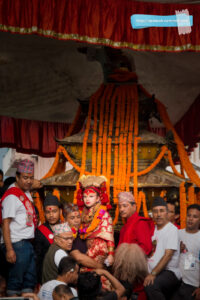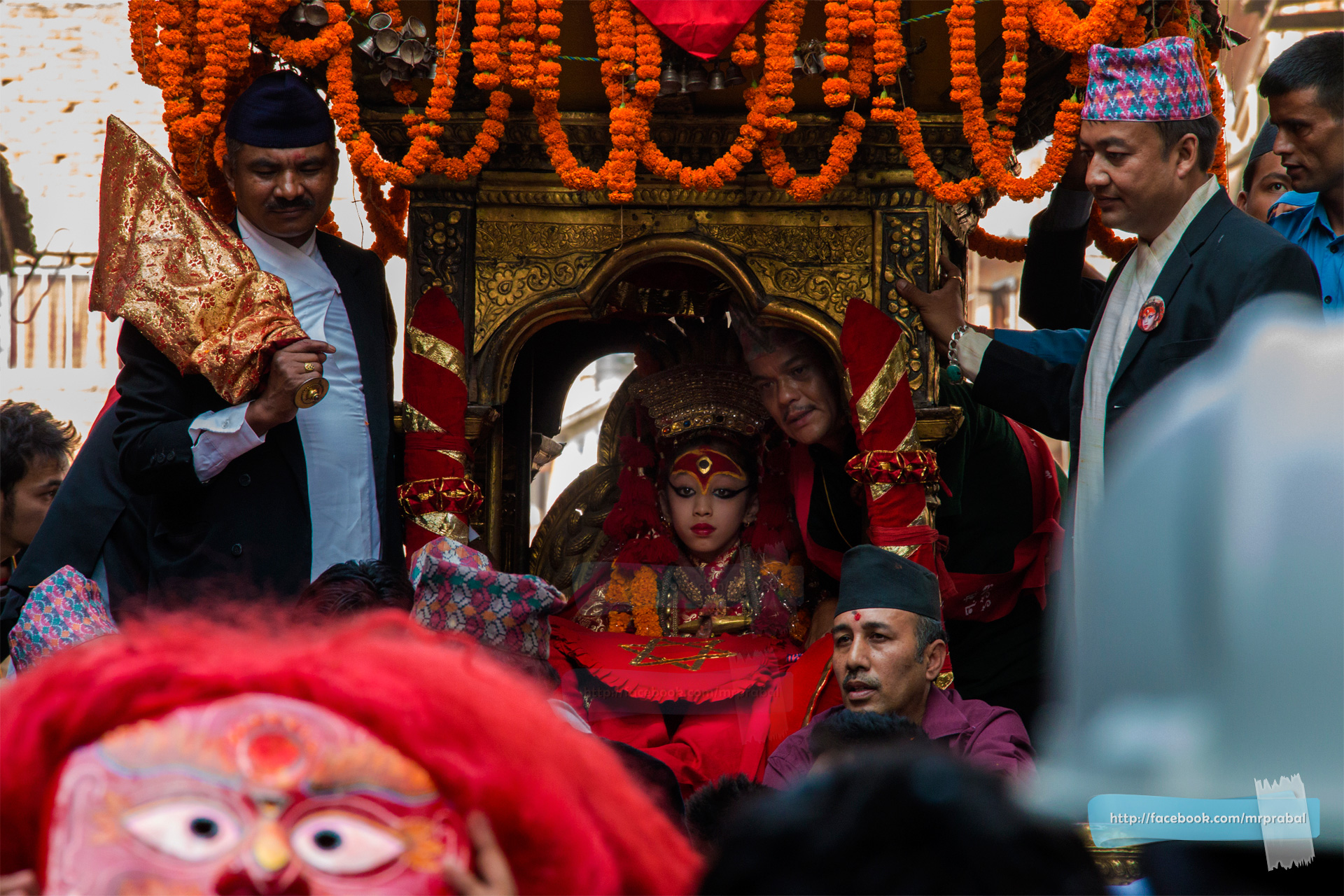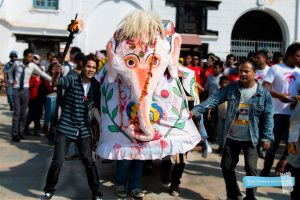
In contrast, the Kathmandu Royal Kumari has secured an even greater prominent Customary, Legislative issues, and gender distinction, for she has proceeded to get the support from the succeeded Shah dynasty. The Royal Kumari is presently a Living Goddess of national significance, and her yearly chariot celebration is a marvelous and colorful occasion gone to by huge swarms.
The Non-Royal Kumari
The other eight non-royal Kumari, however each are without doubt laden with aspects of great interest, are local in importance only so must be left aside here as pertaining to space. Kumari in Nepal, even though with a whole lot of legend and mystery surround its history. Although it is confirmed that a divinity by this title has been prayed to for centuries, probably right from around the 6th century, no assertion can be created tending point in time as of why and how such ritual came into being.
Malla and Gorkha
Through several roundabout sources it seems possible that the movement may have originated during the eleventh century in small local groups, much like those still existing in NorthEastern Punjab after Vajrayana Buddhism was introduced. Indeed, a particular local chronicle (Vamsiivali), preserves that even from this early time a Patan Kumari was honoured by the ruler.
However, the majority of the chronicles and oral traditions are unanimous in attributing them to royal origin dating back to Malla period. Some give credit, however unjustifiably (as he was after all a seventeenth-century Malla of Kathmandu), to Trailokya Malla who in the late sixteenth century ruled at Bhadgaon as lord-paramount over an united kingdom. Still others credit Siddhi Narasingh Malla, a seventeenth-century ruler of Patan or Jayaprakasa Malla (mid-eighteenth century Kathmandu), who was overthrown by the Gorkhas.
A significant feature of most of these stories is the appearance of Taleju or Tulaja Bhavani as the tutelary deity of the reigning ruler, a position she has held to the present day.
Taleju Bhawani
Taleju is consistently delineated as a beautiful Goddess who in earlier periods kept blessing the ruler. Then at one point one day, something went down that was so offensive to her she decided not (or could no longer) show up in a physical form. In some versions, the Ruler himself violated it by disobeying his own rule that he should not check up on her when he visited; in other cases, the culprit was a jealous female member of his circle of kith and kin — either his wife or daughter. The God, though made him to have a strong desire for the Goddess.
The taking after night Taleju appeared in the King’s dream and informed him that it was well knowing that he may not encounter her as he used to sometime before but she would let him adore and counsel with her through the frame of a young beautiful woman whose family indulged in a corrupted or contaminating profession.
The Shakya Kumari

In most forms, the caste named was the Shakya, in spite of the fact that in Patan it was the Gubhaju. The determination is of intrigued on two counts-though the Mallas were standard Hindu Rulers and both Taleju and Royal Kumari are obviously Hindu gods, the Shakya and Gubhaju are immaculate Buddhist castes of tall notoriety.
They are the sole tenants of the previous Buddhist cloisters (bahi and baha), and indeed nowadays, a few six or seven hundred long times after the collapse of devotion, their boys are started in bunch ceremonies in which they gotten to be friars for four days. The Gubhaju alone have the right to hone as Buddhist household clerics, and both in work and in status they are a near copy of the Hindu Brahmans.
The Shakya and Kumari
In most form it was the caste named the Shakya, whereas in Patan it was the Gubhaju. The determination is of intrigued on two counts-though the Mallas were standard Hindu Rulers and both Taleju and Royal Kumari are obviously Hindu gods, the Shakya and Gubhaju are immaculate Buddhist castes of tall notoriety.
They are the only residents of the past Buddhist monasteries (bahi and baha), and indeed nowadays, a few six or seven hundred years after the decline of piety, their boys are initiated in group rituals where they become monks for four days. Only the Gubhaju have the privilege of hone as Buddhist household clerics; similarly, in respect of their work as well as status, they resemble the Hindu Brahmans.
They are the only residents of the past Buddhist monasteries (bahi and baha), and they are only nowadays few six or seven hundred years after the decline of piety, their boys are initiated in group rituals where they are become monks for four days. The honor of hone is the prerogative of the Gubhaju who are Buddhists household clerics; in respect of their work as well as honor, they are similar to the Hindu Brahmans. Each of the stories shows that the lord misunderstands support with his ensuring god, something which may denote a few hitches in his political status.
The rebirth of Taleju as Kumari in the form of a young Buddhist lady accomplished the decisive task of pre figuring the source of the regal legitimacy outside the palace. This include of the faction without a doubt picked up in significance when the Gorkhas prevailed the Newars and they as well found it alluring to recognize the legitimating work of the Shakya Kumari of Kathmandu.
Prithvi Narayan and Goddess Kumari
Virtually every history textbook in the country has it that when Prithvi Narayan Shah, the then reigning Gorkha king approached Kathmandu during Kumari festival he first took prashad or blessing from a goddess and only after doing so proclaimed that the festival should continue. This is the event that above all else signifies as authenticating to modern dynasty-ritual action of profound significance repeated each year at her festival when the Lord came into her house to kiss her feet and receive tika from here.
The legitimating work of this trade is apparent in the numerous stories that are told of a alter of ruler or indeed line taking after a few inconsistencies. For instance, in 1955 the goddess, who would seem to be dozing, placed the tika on the forehead of the monarch or perhaps then the king. Eight months later died Ruler Tribhuvan and his son Mahendra became a king.
Sirnraongadh
Since each of the central Kumaris in the three capital cities is still respected as, among other things, a living shape of Taleju Bhavani, it is worth stopping for a minute to consider the nature of this goddess. Agreeing to the chronicles she was to begin with brought to Kathmandu valley by Harisingh Deva, a fourteenth-century Kamatic sovereign of Tirhut whose capital was at Sirnraongadh in what is presently a portion of southern Nepal.
The appearance of Harisingh in valley legislative issues was a coordinated result of the collapse of Hindu kingdoms in north India due to the quick development of Muslim control. Although students of history are dubious as to whether Harisingh really ruled the nation from Bhadgaon or basically worked out a few kinds of impact at court, it appears past question that it was amid this period that Taleju Bhavani: was built up as the tutelary holiness of Nepalese rulers.



